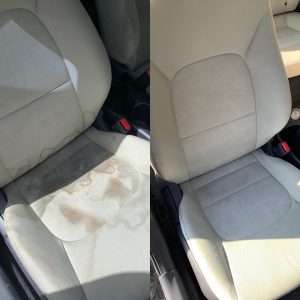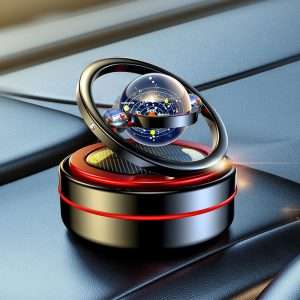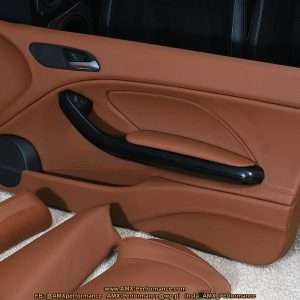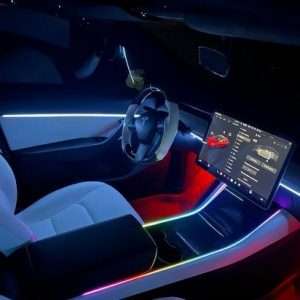Understanding the Car Interior Light Door Switch
The car interior light door switch is a small but crucial component․ It controls the interior lights based on the door’s open or closed state․ It’s a simple mechanism, but when it fails, it can be quite annoying․ This guide will help you understand its function and troubleshooting․
It’s a very important part of your car’s electrical system․ Without it, you might have to manually turn on and off the lights․ That’s not very convenient, is it?
How the Door Switch Works
The switch is typically a simple on/off mechanism․ When the door is opened, the switch completes a circuit, turning on the interior lights․ Closing the door breaks the circuit, turning the lights off․ It’s a basic electrical principle․
The switch is usually located on the door frame․ It’s often a small, plunger-type switch․ Sometimes, it can be a more complex sensor․
Common Types of Door Switches
- Plunger Switch: The most common type, activated by physical pressure․
- Magnetic Switch: Uses a magnet to detect the door’s position․
- Proximity Sensor: A more advanced sensor that detects the door without physical contact․
Troubleshooting a Faulty Door Switch
If your interior lights aren’t working correctly, the door switch is a likely culprit․ Here’s how to troubleshoot it․ It’s not always easy, but with a little patience, you can figure it out․
- Check the Bulb: As mentioned before, make sure the bulb isn’t blown․
- Inspect the Switch: Look for any visible damage or corrosion․
- Test the Switch: Use a multimeter to check for continuity when the switch is activated․
- Clean the Switch: Dirt and grime can interfere with the switch’s operation․
Replacing the Door Switch
Replacing the door switch is usually a straightforward process․ Here’s a general guide․ Always consult your car’s repair manual for specific instructions․
- Disconnect the battery․
- Remove the old switch․ This may involve removing screws or clips․
- Disconnect the wiring harness from the old switch;
- Connect the wiring harness to the new switch․
- Install the new switch․
- Reconnect the battery․
- Test the lights․
FAQ: Car Interior Light Door Switch
Advanced Troubleshooting Techniques
Sometimes, the simple solutions don’t work․ In these cases, you might need to delve deeper into the electrical system․ This requires more advanced tools and knowledge․ Don’t be afraid to seek professional help if you’re not comfortable․
Using a Multimeter
A multimeter is essential for diagnosing electrical problems․ It allows you to measure voltage, current, and resistance․ It’s a powerful tool, but it requires careful use․
- Voltage Test: Check for voltage at the switch connector when the door is open and closed․
- Continuity Test: Verify the switch’s continuity when activated․
- Resistance Test: Measure the resistance of the wiring to identify shorts or breaks․
Remember to consult your car’s wiring diagram before testing․ Incorrect readings can lead to misdiagnosis․ A good wiring diagram is your best friend․
Preventative Maintenance
Preventing problems is always better than fixing them․ Here are some tips to keep your door switches in good working order․ A little maintenance goes a long way․
- Regular Cleaning: Clean the switches periodically to remove dirt and grime․
- Lubrication: Apply a small amount of dielectric grease to the switch contacts․
- Inspection: Inspect the switches for damage or corrosion during routine maintenance․
By following these simple steps, you can extend the life of your door switches․ This will save you time and money in the long run․ It’s a small investment for peace of mind․
Understanding Wiring Diagrams
A wiring diagram is a map of your car’s electrical system․ It shows the connections between all the components․ It can be intimidating at first, but it’s a valuable resource․
Key Elements of a Wiring Diagram
- Symbols: Each component is represented by a symbol․
- Lines: Lines represent wires․
- Colors: Wire colors are often indicated․
- Connectors: Connectors are shown as circles or squares․
Learning to read a wiring diagram can greatly simplify troubleshooting․ It allows you to trace circuits and identify potential problems․ It’s a skill worth developing․
Aftermarket Door Switches
If you need to replace your door switch, you have the option of using an aftermarket part․ Aftermarket parts can be cheaper than OEM parts․ However, quality can vary․
Factors to Consider
- Quality: Choose a reputable brand․
- Compatibility: Ensure the switch is compatible with your car model․
- Warranty: Look for a warranty․
Do your research before buying an aftermarket door switch․ Read reviews and compare prices․ A little effort can save you from buying a poor-quality part․
Advanced Testing with a Scan Tool
Modern vehicles often have sophisticated electronic systems․ A scan tool can be invaluable for diagnosing problems․ It can read error codes and provide valuable insights․
Using a Scan Tool for Door Switch Issues
- Check for Body Control Module (BCM) codes related to door switches․
- Monitor the door switch status in real-time․
- Perform actuator tests to verify the BCM’s response․
A scan tool can help you pinpoint the exact cause of the problem․ It can also save you time and effort․ However, it requires some knowledge of automotive electronics․
Dealing with Corrosion
Corrosion is a common problem in automotive electrical systems․ It can cause poor connections and intermittent failures․ It’s important to address corrosion promptly․
How to Prevent and Remove Corrosion
- Use dielectric grease on electrical connections․
- Clean corroded terminals with a wire brush or sandpaper․
- Apply a corrosion inhibitor to protect the terminals․
Corrosion can be a persistent problem; Regular maintenance is key to preventing it․ A little effort can save you from major headaches․
When to Seek Professional Help
Sometimes, troubleshooting electrical problems can be challenging․ If you’re not comfortable working on your car’s electrical system, it’s best to seek professional help․ It’s better to be safe than sorry․
Signs You Need a Mechanic
- You’re not comfortable working on electrical systems․
- You’ve tried troubleshooting the problem without success․
- You suspect a more complex electrical issue․
A qualified mechanic has the tools and expertise to diagnose and repair electrical problems․ They can also ensure that the repairs are done safely and correctly․ Don’t hesitate to ask for help when you need it․
Understanding the Role of the Body Control Module (BCM)
The Body Control Module (BCM) is a central computer that controls many of the car’s functions, including the interior lights․ It receives signals from the door switches and activates the lights accordingly․ Understanding the BCM’s role is crucial for diagnosing complex electrical problems․
How the BCM Affects Interior Lights
- The BCM monitors the door switch signals․
- It controls the dimming function of the interior lights․
- It can disable the interior lights to conserve battery power․
If the BCM is faulty, it can cause a variety of problems with the interior lights․ Diagnosing BCM issues requires specialized tools and knowledge․ It’s often best left to a professional․
CSS Styling (Example):
css
․info-block {
background-color: #f0f8ff; /* Light blue background /
border-radius: 10px;
box-shadow: 0 4px 8px rgba(0, 0, 0, 0․1);
padding: 20px;
margin-bottom: 20px;
position: relative; / For the stripe /
}
․info-block::before {
content: “”;
position: absolute;
left: 0;
top: 0;
bottom: 0;
width: 5px;
background-color: #4682b4; / Steel blue stripe /
border-radius: 10px 0 0 10px;
}
․info-block h2 {
margin-top: 0;
color: #333;
}
․callout {
background-color: #fffacd; / Light yellow background /
border-radius: 5px;
padding: 10px;
margin: 10px 0;
border-left: 5px solid #dda0dd; / Plum colored left border /
}
․faq-question {
font-weight: bold;
margin-top: 10px;
}
․faq-answer {
margin-bottom: 10px;
}
Explanation of the CSS:
`․info-block`: Styles the main container with background color, rounded corners, shadow, padding, and margin․ `position: relative` is important for positioning the colored stripe․
- `․info-block::before`: Creates the colored stripe on the left side using a pseudo-element․
- `․info-block h2`: Styles the heading within the block․
- `;callout`: Styles the callout boxes with a different background color, rounded corners, padding, and a colored border on the left․
- `․faq-question` and `․faq-answer`: Styles for the FAQ section․
This HTML and CSS provides a good foundation for creating visually appealing and informative blocks for your article․ Remember to adjust the colors and styling to match your website’s overall design․




